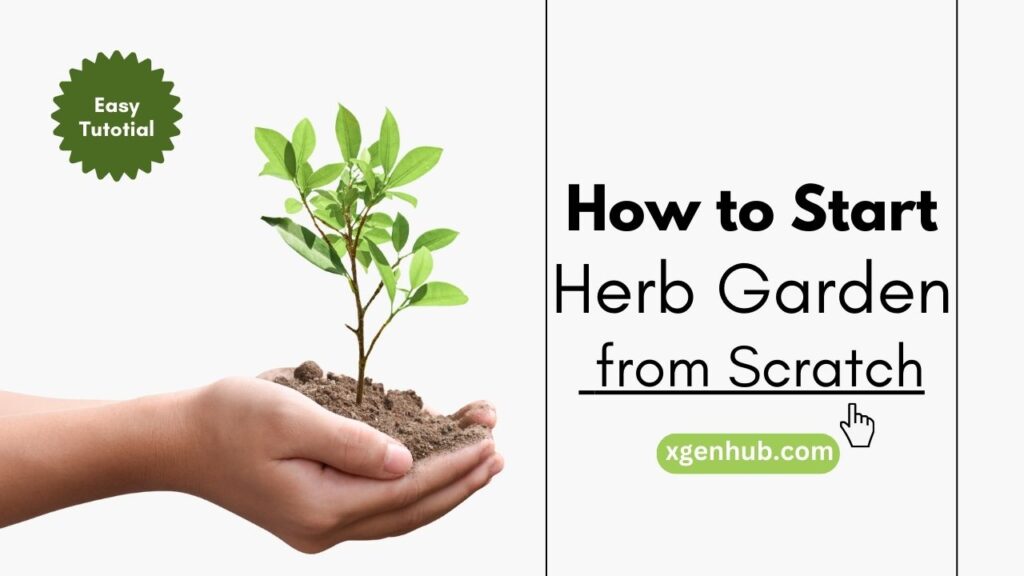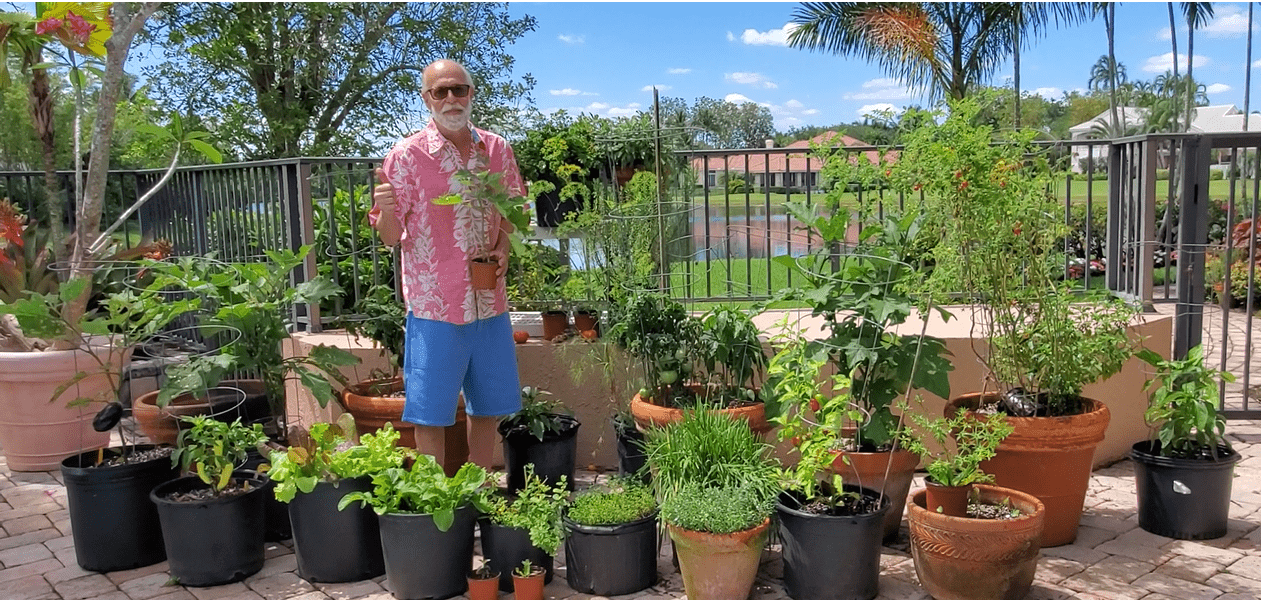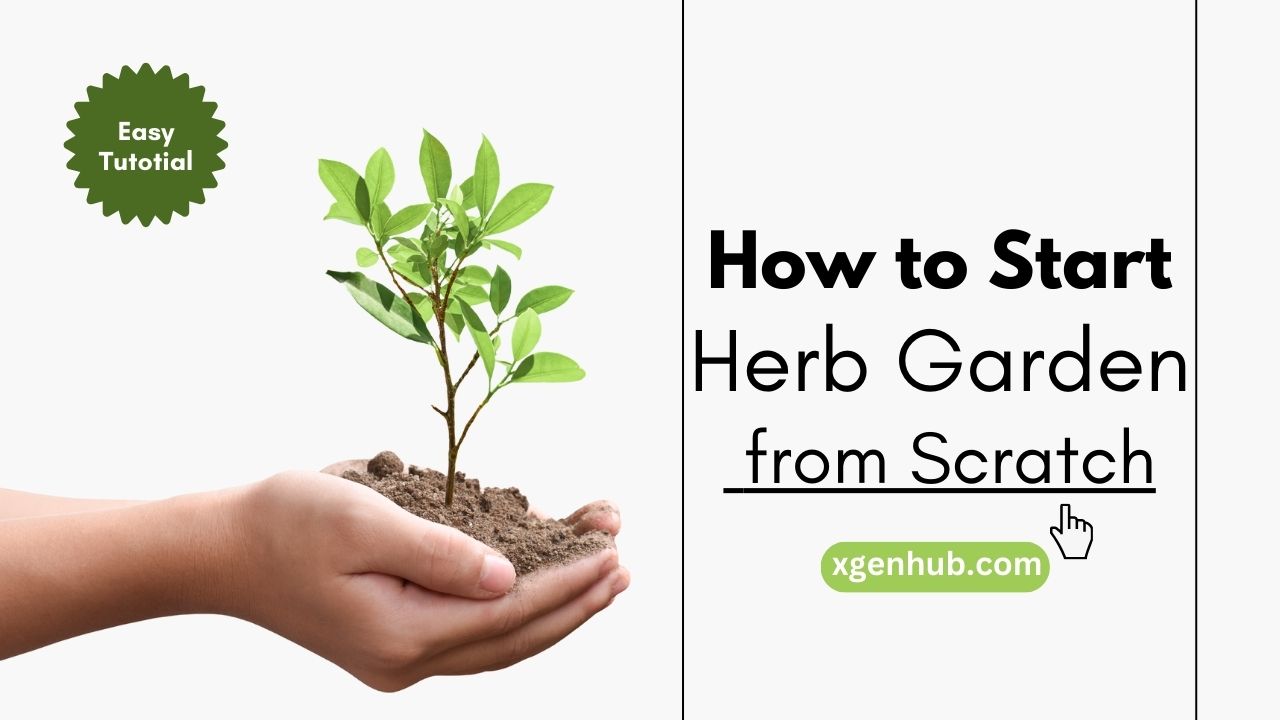Starting a herb garden from scratch is a rewarding venture that offers both culinary and aesthetic benefits. Whether you have a sprawling backyard or a small apartment balcony, growing your own herbs can enhance your cooking, provide fresh flavors, and bring a sense of tranquility to your space. In this comprehensive guide, we’ll explore everything you need to know about how to start a herb garden from scratch, ensuring that your gardening experience is not only successful but also enjoyable.
Unlock Your Online Success! Watch Our Exclusive Video for FREE and Start Earning Today!

Understanding the Benefits of a Herb Garden
Culinary Advantages
One of the most appealing reasons to start a herb garden is the ability to harvest fresh herbs for your cooking. Fresh herbs can elevate the flavor of any dish, making it more vibrant and enjoyable. Common culinary herbs like basil, cilantro, and parsley are essential ingredients in many recipes, and having them readily available can inspire creativity in the kitchen.
Unlock Your Online Success! Watch Our Exclusive Video for FREE and Start Earning Today!

Health Benefits
Herbs are not just flavor enhancers; they also come packed with nutrients and health benefits. For instance, basil is known for its anti-inflammatory properties, while rosemary is rich in antioxidants. By growing your own herbs, you can incorporate these healthy ingredients into your meals.
Environmental Impact
Starting a herb garden contributes to environmental sustainability. Growing your own herbs reduces the carbon footprint associated with store-bought herbs, which often involve transportation and packaging. Additionally, herbs can attract beneficial insects and pollinators to your garden, promoting a healthy ecosystem.
Choosing the Right Location
Sunlight Requirements
Most herbs thrive in full sunlight, requiring at least 6 to 8 hours of direct sunlight daily. When selecting a location for your herb garden, observe the sunlight patterns in your chosen area. If you have limited sunlight, consider growing herbs that tolerate partial shade, such as mint or chives.
Accessibility
Your herb garden should be easily accessible for regular maintenance. Consider proximity to your kitchen for convenience in harvesting. Whether you choose a raised bed, garden plot, or containers, ensure that the location allows for easy watering and care.
Selecting the Right Herbs
Popular Herbs for Beginners
When starting a herb garden, choose herbs that are easy to grow and versatile in the kitchen. Some excellent options include:
Unlock Your Online Success! Watch Our Exclusive Video for FREE and Start Earning Today!
- Basil: Ideal for pesto, salads, and pasta dishes.
- Parsley: A culinary staple that adds freshness to many recipes.
- Cilantro: Essential in various cuisines, particularly Mexican and Asian dishes.
- Mint: Great for teas, desserts, and cocktails.
- Thyme: Perfect for seasoning meats and vegetables.
Consider Your Culinary Preferences
Select herbs that you frequently use in your cooking. This ensures that you’ll maximize the benefits of your herb garden. If you love Italian cuisine, consider planting oregano and rosemary; for Asian dishes, incorporate lemongrass and Thai basil.
Preparing the Soil
Soil Quality
Good soil is essential for a thriving herb garden. Herbs prefer well-draining soil rich in organic matter. If your soil is heavy clay or sandy, amend it with compost to improve its texture and fertility.
Soil pH
Most herbs prefer a slightly acidic to neutral pH (around 6.0 to 7.0). You can test your soil’s pH using a simple home kit. If your soil is too acidic, add lime; if it’s too alkaline, consider adding sulfur.
Planting Your Herbs
Seeds vs. Seedlings
You can start your herb garden from seeds or purchase seedlings from a nursery. Seeds require more time and care, while seedlings offer a quicker start. For beginners, starting with seedlings may yield faster results and boost your confidence as a gardener.
Unlock Your Online Success! Watch Our Exclusive Video for FREE and Start Earning Today!
Planting Techniques
- Spacing: Follow the recommended spacing guidelines on seed packets or plant labels. Proper spacing allows for air circulation and reduces competition for nutrients.
- Depth: Plant seeds at the recommended depth, usually about twice the size of the seed. For seedlings, dig a hole deep enough to cover the root ball and gently firm the soil around the base.
Watering After Planting
After planting, water your herbs thoroughly to help settle the soil. Ensure that the water reaches the root zone without waterlogging the plants. Regular watering is crucial, especially during the initial growth phase.
Caring for Your Herb Garden
Watering Schedule
Herbs generally prefer to dry out slightly between waterings. A good rule of thumb is to check the top inch of soil; if it’s dry, it’s time to water. Avoid overwatering, as this can lead to root rot.
Fertilization
While herbs don’t require excessive fertilization, adding a balanced organic fertilizer every few weeks can promote healthy growth. Look for fertilizers specifically formulated for herbs or vegetables to avoid nutrient burn.
Pruning and Harvesting
Regular pruning encourages bushy growth and prevents flowering, which can diminish the flavor of herbs. Harvest leaves as needed, ensuring you leave enough foliage for the plant to continue thriving. The best time to harvest herbs is in the morning after the dew has dried.
Pest and Disease Management
Common Pests
Watch for pests like aphids, spider mites, and whiteflies. Use organic pest control methods, such as neem oil or insecticidal soap, to manage infestations without harming beneficial insects.
Unlock Your Online Success! Watch Our Exclusive Video for FREE and Start Earning Today!
Disease Prevention
To prevent diseases, ensure good air circulation around your plants and avoid overhead watering. If you notice any diseased leaves, promptly remove and dispose of them to prevent the spread of infection.
Seasonal Care and Maintenance
Seasonal Changes
As seasons change, adjust your care routine. In hotter months, increase watering frequency; in cooler months, reduce it. If you live in a region with frost, consider bringing potted herbs indoors or covering them with protective cloth.
Preparing for Winter
Many herbs are perennials, but some may require extra care during winter. Mulch around the base of perennials to protect roots from freezing temperatures. For tender annuals, you may need to replant each spring.
Using Your Fresh Herbs
Culinary Uses
Experiment with various ways to incorporate fresh herbs into your meals. Use them in salads, soups, stews, sauces, and marinades. Fresh herbs can also enhance the flavor of roasted vegetables and grilled meats.
Unlock Your Online Success! Watch Our Exclusive Video for FREE and Start Earning Today!
Preservation Methods
If you have an abundance of herbs, consider preserving them for later use. Some popular preservation methods include:
- Drying: Hang herbs upside down in a dark, dry place until fully dried.
- Freezing: Chop herbs and mix them with olive oil in ice cube trays, then freeze.
- Making Herb-infused Oils: Combine fresh herbs with oil for a flavorful infusion.
Conclusion
Starting a herb garden from scratch is a fulfilling endeavor that can enhance your cooking and contribute positively to your environment. By choosing the right location, selecting the best herbs, and following proper care techniques, you can enjoy a thriving herb garden that provides fresh ingredients year-round. With this detailed guide, you’re well-equipped to embark on your herb gardening journey. Happy gardening, and enjoy the wonderful flavors of your homegrown herbs!
By incorporating these tips and techniques, you’ll not only achieve a healthy herb garden but also ensure a sustainable and enjoyable gardening experience. Starting your own herb garden from scratch is a step toward culinary creativity and a greener lifestyle.
